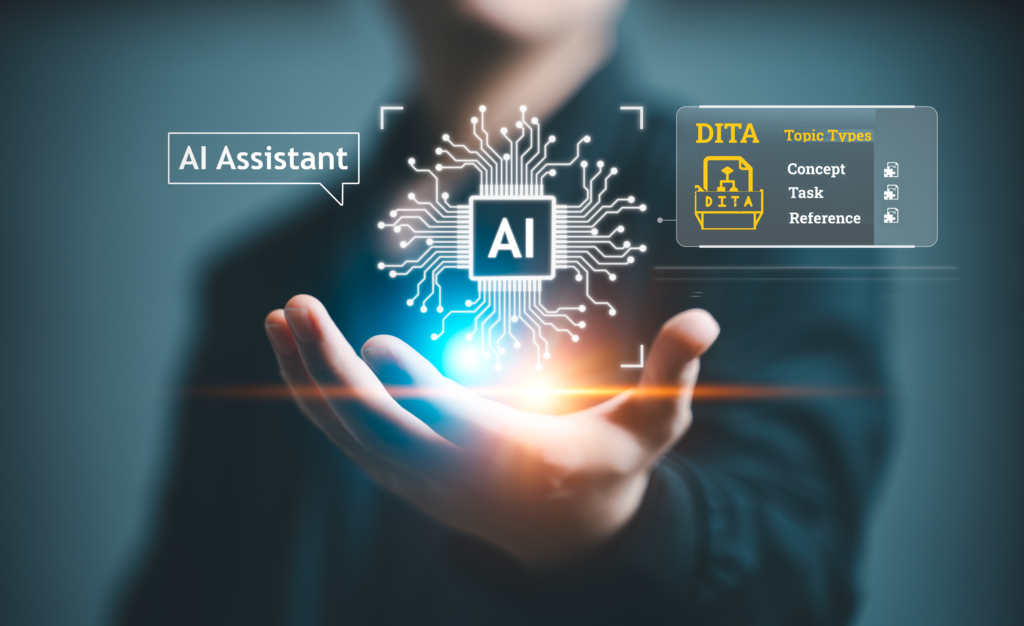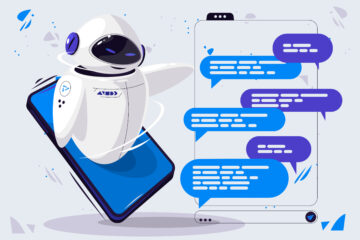DITA Topics vs. AI Capabilities: The Dynamic Duo

In the ever-evolving landscape of technical content creation, the debate between utilizing DITA (Darwin Information Typing Architecture) XML and harnessing AI capabilities is gaining momentum. DITA has long been the go-to standard for structured authoring, enabling content reuse and facilitating content management. On the other hand, AI-powered solutions are unlocking new possibilities in automating content generation and organization. In this article, we explore the potential of AI in breaking down content and its impact on the complexities of understanding DITA.
The Power of AI in Content Creation
AI capabilities have marked a paradigm shift in technical content creation. Through natural language processing (NLP) and machine learning algorithms, AI can now analyze vast amounts of unstructured data, identify patterns, and categorize information into different types of topics, such as tasks, concepts, and references. This level of automation opens doors to accelerated content production, greater efficiency, and improved user experiences.
1. Breaking Down Content with AI:
Traditional content creation using DITA XML involves manual tagging and structuring, which can be time-consuming and resource-intensive. With AI’s advanced capabilities, technical writers can now rely on machine-driven processes to break down content and generate structured topics with minimal manual intervention. AI excels at recognizing content elements and classifying them into DITA-defined topic types, saving significant time for content creators.
2. AI’s Adaptive Learning:
The more AI is exposed to content, the smarter it becomes. Through adaptive learning, AI algorithms continuously improve their understanding of content structures and the context in which topics are presented. This adaptability allows AI to evolve alongside content needs, ensuring greater accuracy in content organization and presentation.
Escaping the Complexities of Understanding DITA Topics
The traditional approach to technical writing using DITA XML demands technical writers to possess a thorough understanding of the DITA structure and its intricacies. This includes knowledge of DITA specialization, specialization schemas, and topic types. However, with the advent of AI capabilities, technical writers can now escape some of the complexities associated with understanding DITA.
AI-driven content generation and organization can alleviate the burden of manual tagging and structuring, enabling technical writers to focus more on the content itself rather than the technicalities of DITA. By leveraging AI, writers can dedicate their time and expertise to creating high-quality, user-centric content, while leaving the formatting and organization to AI algorithms.
Moreover, AI can assist in transforming existing non-DITA content into structured DITA topics. By training AI models with examples of DITA content and the desired topic types, writers can automate the process of converting unstructured content into a structured format, reducing the need for extensive manual effort.
The Future of DITA and AI
While AI capabilities in content creation are rapidly advancing, it is important to note that AI is not independent of DITA XML. In fact, AI complements DITA by enhancing its capabilities and streamlining content production. Rather than replacing DITA, AI serves as a powerful tool that amplifies the benefits of structured authoring.
The deep understanding of adaptive technical documentation that Contents Dynamics brings to the table combines the best of both worlds. Leveraging AI-powered solutions, Contents Dynamics empowers technical writers to create content more efficiently, break down complex information into structured topics, and deliver exceptional user experiences.
Conclusion
As the demand for engaging and user-friendly technical content grows, the debate between DITA XML and AI capabilities becomes increasingly relevant. While DITA has been a staple in structured authoring, AI-driven solutions offer new avenues for automating content generation and organization. The convergence of DITA and AI allows technical writers to escape the complexities of DITA while harnessing the power of AI to create diverse topic types and streamline content production.
Contents Dynamics, with its deep expertise in adaptive technical documentation and AI-powered solutions, is at the forefront of this transformative journey. By embracing the combined power of DITA and AI, Contents Dynamics is revolutionizing technical content creation and helping organizations deliver seamless, user-centric documentation experiences.


